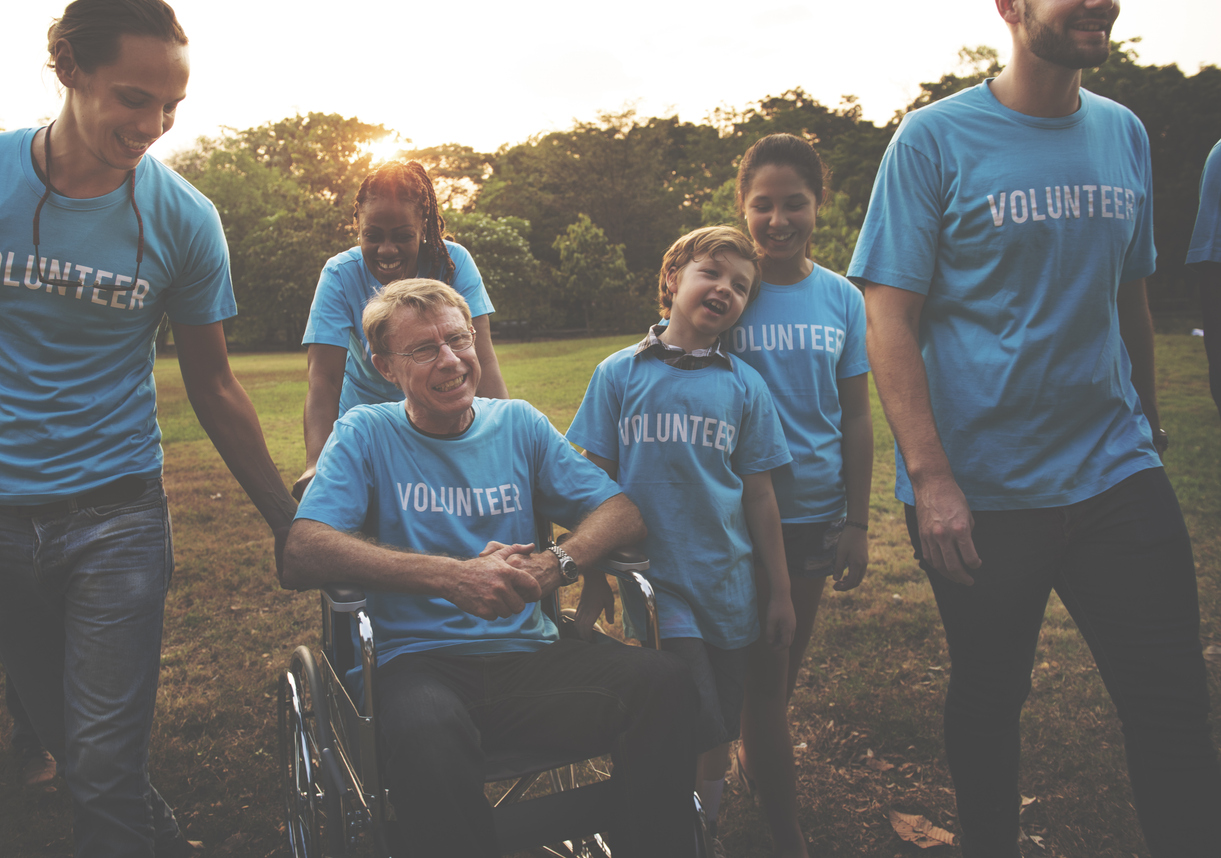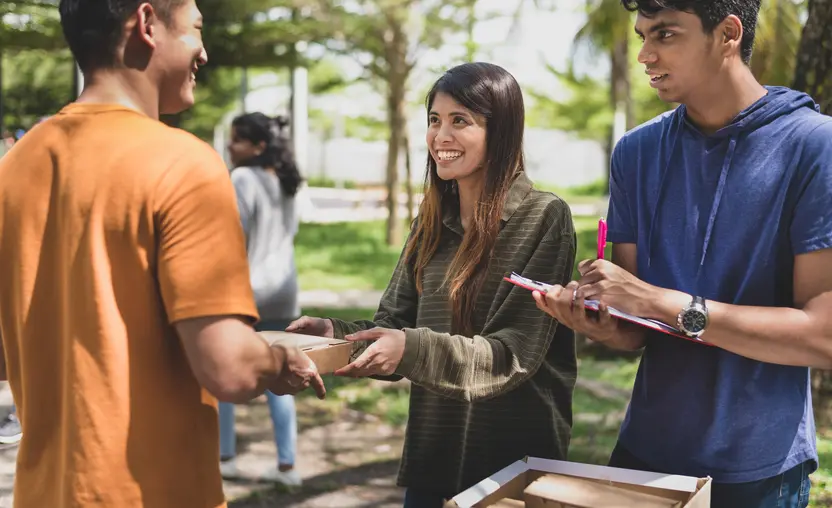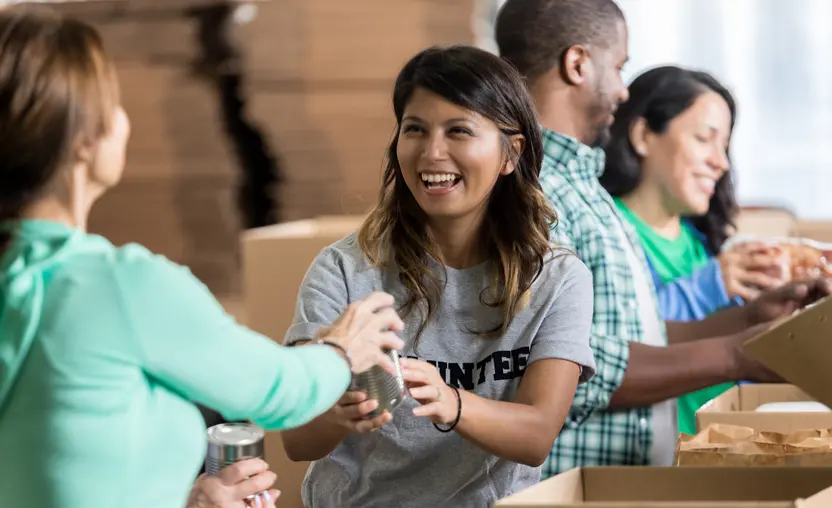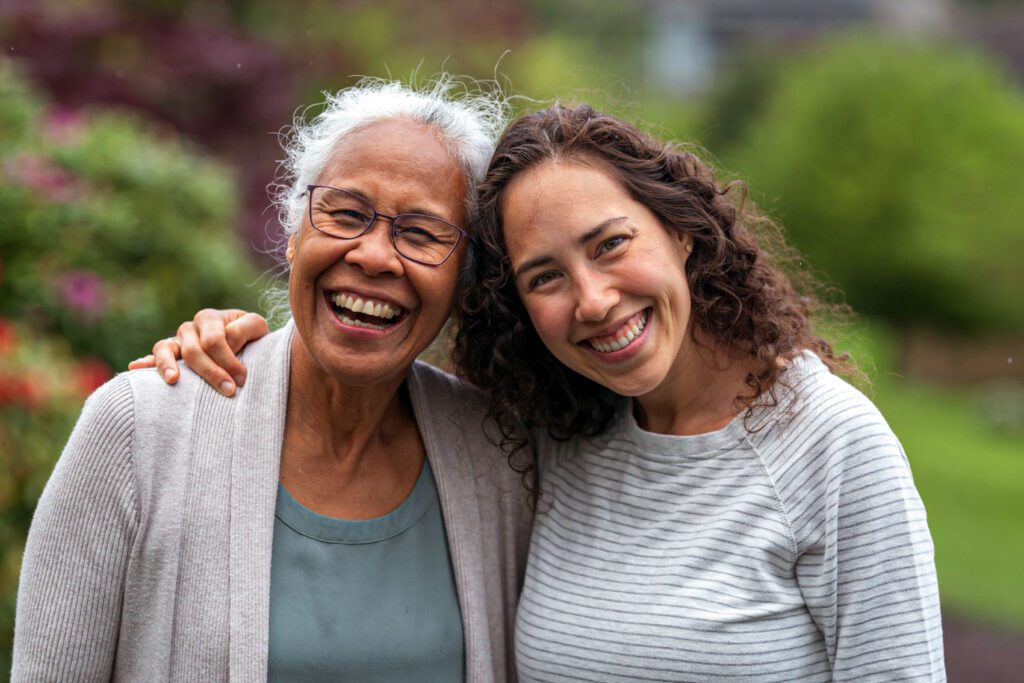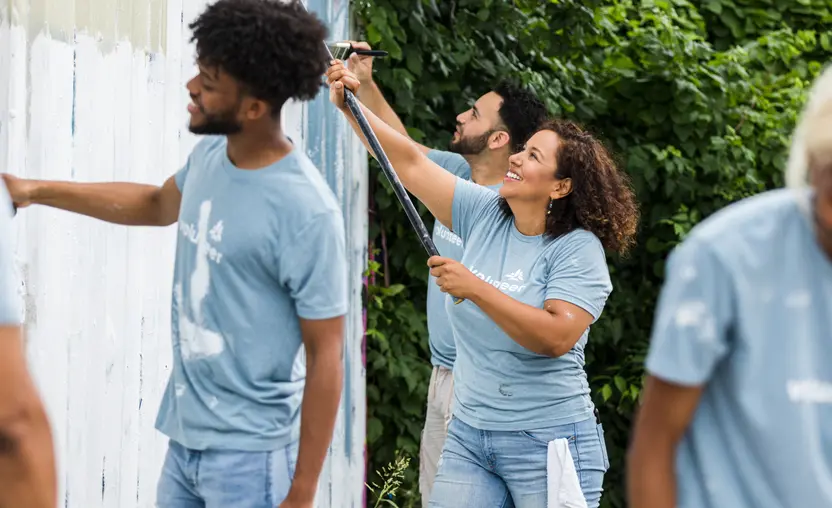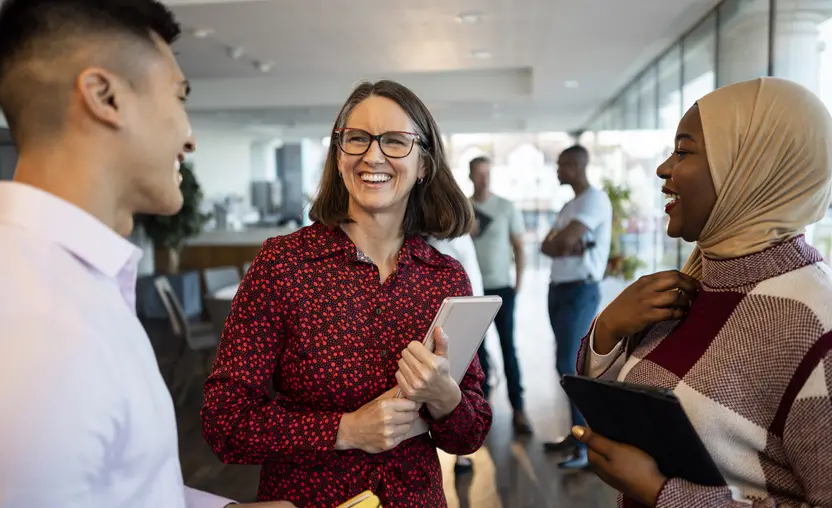“It’s just a matter of getting out there and showing people your abilities rather than any restrictions,” says volunteer Rick Welsh. While operating his wheelchair, Rick trains puppies for a service dog organization in Central Massachusetts.
He defies the notion that disabled people can only be recipients — not givers — of aid, a stigma that’s pervaded the volunteer space. But systemic barriers are inhibiting participation for some living with disabilities.
One study found that “adults with disabilities can — and do — participate in voluntary work, but may
face barriers to accessing formal volunteer roles.”
Considering the stagnated giving rate of the U.S. GDP in the U.S. — stuck at 2.5% for the past 50 years, a figure that includes approximated volunteer labor — the barriers to inclusion for those living with disabilities must be addressed by organizations who want to make a bigger impact.
Some leaders in the industry are working to make volunteering available to everyone. Their best-practices include utilizing
volunteer management software technology, inclusion practices, and the consideration of individual needs to reach more and do more.
The social model of disability and the barriers to change
Disability is defined as an impairment of physical or mental function. Those living with disabilities are not a monolith, and their individual needs are based on what tools or considerations are required to partake in everyday activities.
There are 42.5 million Americans living with disabilities, according to the 2021 census. But a 2023 study found that
fewer young people with disabilities were likely to volunteer compared to their non-disabled contemporaries — 48% versus 56%, respectively.
Several reasons account for this gap in volunteering — lack of awareness of causes, communication gaps, and common systemic barriers such as physical and psychological accessibility. A shift in approach could address this lapse.
The
social model of disability, created in the 1970s, challenges the more conventional medical model, which asserts that an individual’s impairment hinders their ability to partake in certain activities. The social model, by contrast, asserts that it is society’s responsibility to address the systemic barriers that inhibit certain individuals from participating.
Tanner Swanson is a communications manager for
A New Leaf in Phoenix, an organization that works at the intersection of homelessness, domestic violence, and poverty-many who are also living with disabilities. The nonprofit has a strong base of 5,000 volunteers annually. Tanner says that fellow organizations must fuel more volunteer engagement by eliminating barriers.
He recommends three ways to better enable volunteers:
1. Expand your search.
Tanner says the first step to enabling volunteerism for all is inclusive outreach and recruiting. “Representation matters. Your recruitment tools (brochures, social media) should be accessible and include visuals of people from all backgrounds, so potential volunteers will feel empowered to participate,” he says. “Let them know what accommodations are available before they come, so they don’t feel it’s on them to start that conversation.”
On where to find volunteers, he says, “I’m always a big believer of going to where the people you want to recruit already are. Find a nonprofit already working with that community and ask if you can partner with them, to help those individuals serve and to better integrate with their community.”
2. Make spaces accessible.
When possible, Tanner says the physical needs of those living with disabilities must be considered. “A lot of nonprofits are utilizing repurposed buildings. They’re usually tight on space. There’s a lot of reasons that staff or administrators might not have thought about the needs of someone with a disability coming into volunteer. But that’s a really important element,” he says.
“Are your facilities wheelchair accessible? Do you have automatic doors? Can desks be adjusted for any height? Bathrooms are also a consideration. You need office spaces and floors that have enough room for individuals to navigate and work comfortably. It’s also important to consider the limitations of older volunteers, who may have visibility or hearing issues.”
3. Create an authentically inclusive culture.
Tanner says that the culture of an organization sustains volunteers of all abilities. This includes employing a well-trained and ability-informed staff. User-friendly and accessible technology can also help. “We use an online recruitment and tracking tool for our volunteers.
Making sure that these programs are accessible is key. We ask: ‘Is it a challenge for you to fill out that information?’ For us, technology partners with our quality staff so that everyone can use and access programs. And for those individuals that can’t use it, they have proper staff support to navigate it.”
Mobilizing toward a better world
Engaging and sustaining volunteers of all abilities could increase giving and drive greater impact in coming years. And Tanner says that those living with disabilities are a population that can offer unique perspectives and skills, particularly because of the intersectionality of certain disabilities with other pertinent issues, like homelessness.
“Anyone who brings empathy to the table is valuable to any organization. And many living with a disability have overcome obstacles. So, it’s important to include them and make sure that they’re able to serve their community that’s experiencing these challenges, just as they are.”
 The social model of disability, created in the 1970s, challenges the more conventional medical model, which asserts that an individual’s impairment hinders their ability to partake in certain activities. The social model, by contrast, asserts that it is society’s responsibility to address the systemic barriers that inhibit certain individuals from participating.
Tanner Swanson is a communications manager for A New Leaf in Phoenix, an organization that works at the intersection of homelessness, domestic violence, and poverty-many who are also living with disabilities. The nonprofit has a strong base of 5,000 volunteers annually. Tanner says that fellow organizations must fuel more volunteer engagement by eliminating barriers.
The social model of disability, created in the 1970s, challenges the more conventional medical model, which asserts that an individual’s impairment hinders their ability to partake in certain activities. The social model, by contrast, asserts that it is society’s responsibility to address the systemic barriers that inhibit certain individuals from participating.
Tanner Swanson is a communications manager for A New Leaf in Phoenix, an organization that works at the intersection of homelessness, domestic violence, and poverty-many who are also living with disabilities. The nonprofit has a strong base of 5,000 volunteers annually. Tanner says that fellow organizations must fuel more volunteer engagement by eliminating barriers.
